Product
Firmness
Score
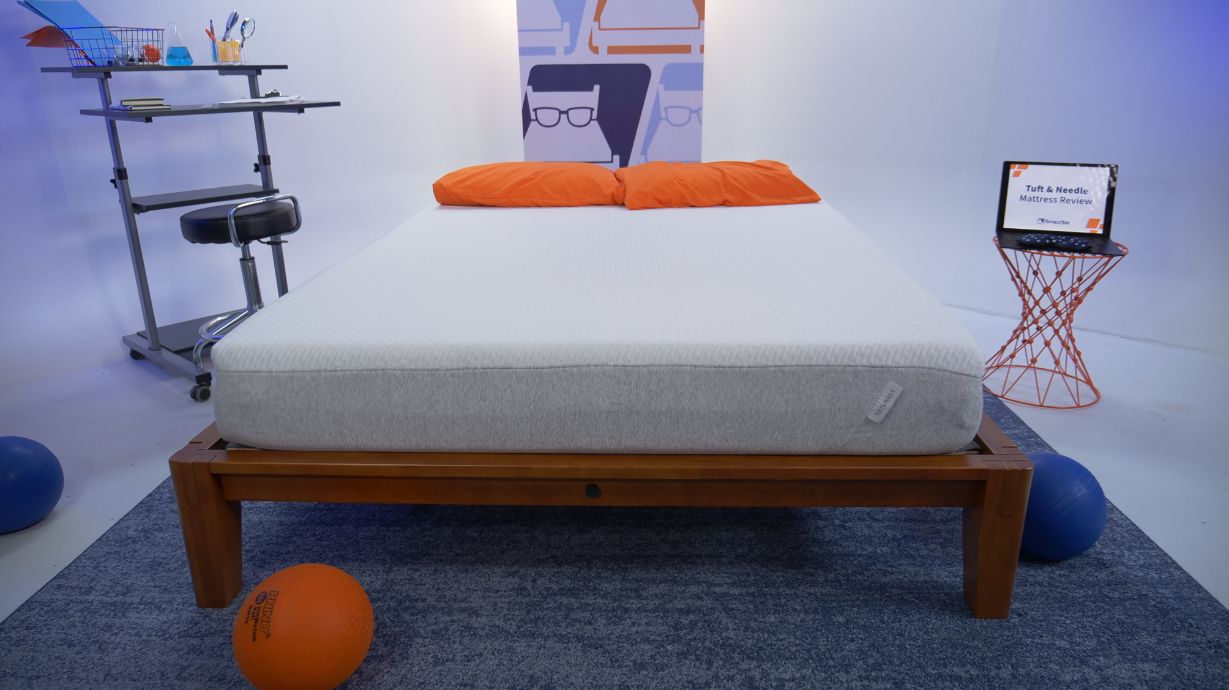
Product
Firmness
Score
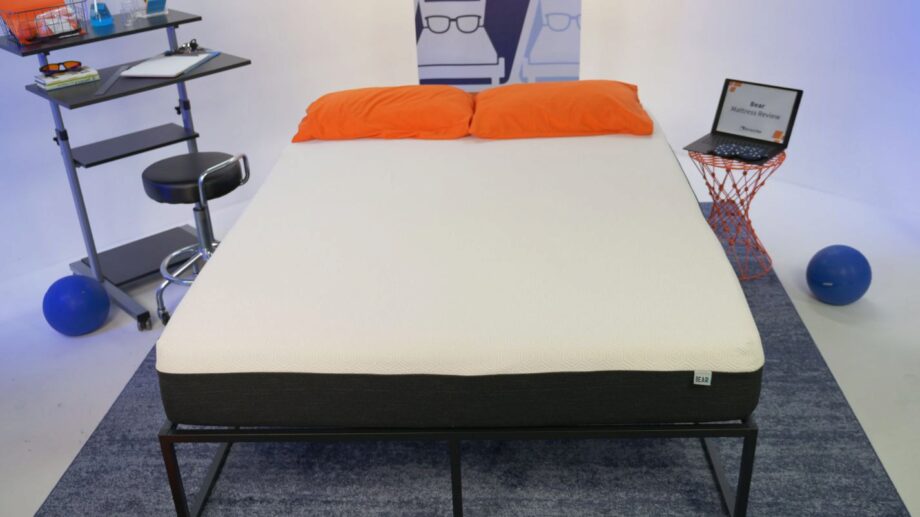
Disclosure: By clicking on the product links in this article, Mattress Nerd may receive a commission fee at no cost to you, the reader. Read full disclosure statement.
The Bear Mattress is a memory foam mattress that was specifically designed with a cooling, medium-firm sleep surface that will aid in muscle recovery and relaxation. The Tuft & Needle Original Mattress consists of proprietary Adaptive foam and high-density support foam.
If you’re having trouble choosing between the two, don’t worry. In this mattress comparison, we’ll go through everything you need to know to pick which mattress is the perfect fit for you and your needs.
Want to know how we test and review our mattresses? Check out our testing methodology.


Both of these mattresses are great memory foam picks, but each has distinct features that make it more suited for specific types of sleepers. Here’s an overview of each mattress’s strong points.
| Bear is best for… | Tuft & Needle is best for… |
| Hot sleepers | Back and stomach sleepers |
| Combination sleepers | Shoulder pain |
| Athletes | Couples |
In this section, we’ll discuss how Bear and Tuft & Needle compare against each other when it comes to mattress firmness and feel.
All mattresses are rated on a firmness scale of 1 to 10, where 1 is the softest and 10 is the most firm. Side sleepers typically prefer a mattress on the softer side to provide cradling support for their hips and shoulders. Back sleepers and stomach sleepers desire mattresses on the firmer side because they can support their hips, shoulders, and neck while they rest.
The Bear mattress rates at 7/10 on the firmness scale, while Tuft & Needle is slightly softer at 6.5/10.
The Bear mattress provides a balanced foam sensation that feels like you’re sleeping on a sturdy and stable surface. We didn’t feel like we sunk into the mattress, but pressure maps did show that the Bear performed well when it came to relieving pressure. Sleeping on the Bear mattress feels more like you’re sleeping “on top” of it instead of “in” it.
The Tuft & Needle doesn’t feel all too different compared to Bear since it also provides a balanced foam feel. However, since it’s relatively softer than the Bear mattress, we felt a slight sink when we lied down on it. Still, there’s not enough sink that would make us feel like we’re sleeping “in” it.
The Bear mattress can pretty much accommodate all sleeping positions, but some are better than others. Because of its firm foam nature, it’s more suited to back and stomach sleepers than side sleepers. Those who sleep on their side may make it work with the Bear, but some may feel like it’s a bit too firm, especially lightweight and average-weight sleepers. The Bear is also very responsive, so those who toss and turn a lot will find it very comfortable to sleep on.
Despite being firmer than most foam mattresses, the Tuft & Needle is softer than the Bear. Since it’s similar in firmness, the Tuft & Needle can also accommodate all sleeping positions. But overall, it’s better suited to back and stomach sleepers. Tuft & Needle is also a good option for side sleepers, but heavier sleepers may feel uncomfy and less supported. It also has responsive foam layers, making it a good choice for most combination sleepers.
Bear Performance By Body Type & Sleeping Position:
| Body Type: | BACK SLEEPERS | STOMACH SLEEPERS | SIDE SLEEPERS |
| Lightweight (< 130 lbs): | 5 | 5 | 2 |
| Average-weight (130–230 lbs): | 5 | 4 | 3 |
| Heavyweight (> 230 lbs): | 3 | 2 | 3 |
Tuft & Needle Performance By Body Type & Sleeping Position:
| Body Type: | BACK SLEEPERS | STOMACH SLEEPERS | SIDE SLEEPERS |
| Lightweight (< 130 lbs): | 5 | 5 | 4 |
| Average-weight (130–230 lbs): | 5 | 4 | 5 |
| Heavyweight (> 230 lbs): | 4 | 3 | 4 |
Average-weight back sleepers will find a good night’s sleep on both Bear and Tuft & Needle, but the former will probably be better overall in support and comfort.
For average-weight side sleepers, Tuft & Needle is the better pick. The Tuft & Needle mattress provides the right balance of cushion and support, while some may find Bear a bit too firm for comfort.
Most average-weight stomach sleepers will probably find better comfort in the Bear mattress. Because of its firmer profile, it does a better job supporting the hips and preventing them from misaligning with the spine.
Average-weight combination sleepers will be comfortable on either mattress since both are responsive to movement. We recommend going for a mattress better suited to your dominant sleeping position (if you have one).
Both mattresses may work well for some heavyweight back sleepers, but some feel like they sink in too much. Still, Bear slightly outperforms Tuft & Needle because of its firmer layers.
When it comes to accommodating heavyweight side sleepers, the firmer Tuft & Needle slightly excels over Bear. However, for better support for your hips and shoulders, we recommend getting firmer and more supportive mattress options from our best mattresses for side sleepers list.
We can’t recommend both mattresses for heavyweight stomach sleepers since they lacked the proper hip support needed for a good night’s sleep. Instead, we recommend firmer mattresses, like the picks in our best mattresses for stomach sleepers list.
Heavyweight combination sleepers will probably sink too much for comfort on either mattress, making it harder for them to move around. In this case, we think more responsive mattress choices from our best mattresses for combination sleepers list are a better pick.
The majority of lightweight back sleepers will find ample back support and cushion on both mattresses. However, Bear performs just slightly better than the Tuft & Needle, especially when it comes to pressure relief on the back.
Lightweight side sleepers are better suited to softer and more cushioning mattresses than Bear and Tuft & Needle. Most will find both too firm.
The Bear mattress should be the pick for lightweight stomach sleepers since it provides more than enough support and cushion for the hips and back.
Lightweight combination sleepers will be happy with either mattress, so they need only choose a mattress that accommodates their dominant sleeping position best.
Both Bear and Tuft & Needle are 10” foam mattresses. Despite the similarities, there are still some notable differences in their mattress construction.
| Bear Mattress Materials | Tuft & Needle Mattress Materials |
| Breathable Celliant Cover | Polyester Blend |
| 2” Graphite-Gel Memory Foam | 3” Adaptive Foam |
| 2” Responsive Transition Foam | – |
| 6” High-Density Support Foam | 7” High-Density Support Foam |
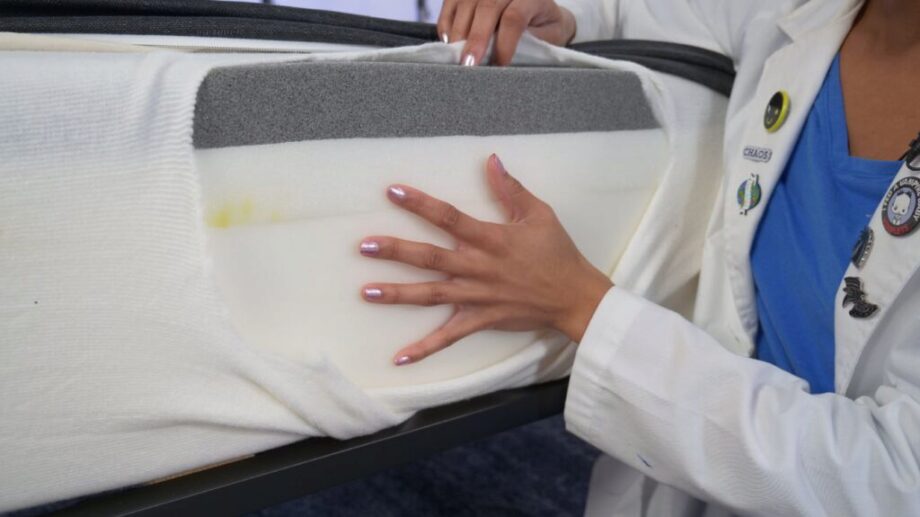
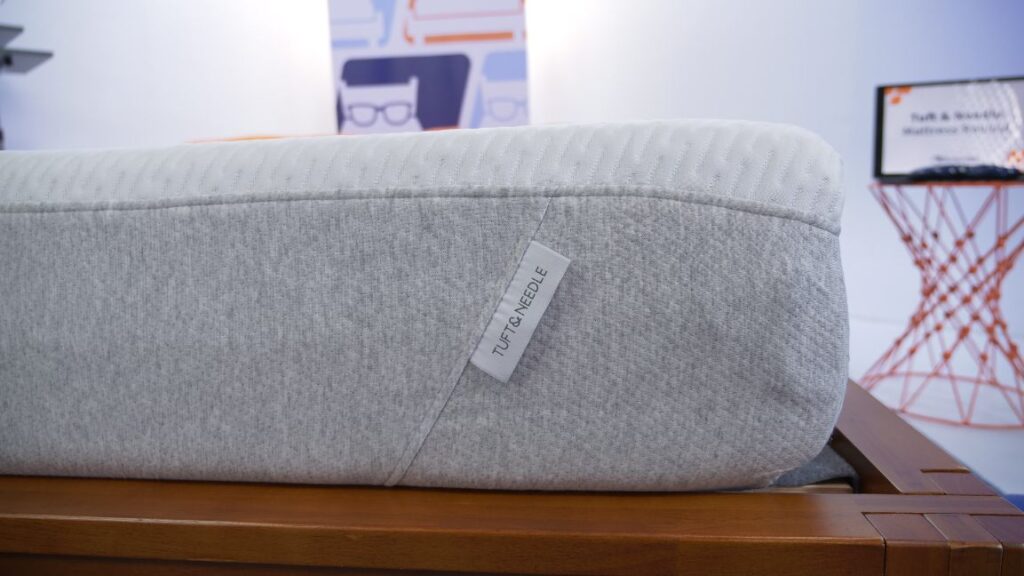
Bear uses its patented Celliant cover that can absorb excess body heat and redirect infrared light into your body for better blood circulation and muscle recovery. Tuft & Needle has a polyester blend cover that’s soft, breathable, and temperature-regulating.
Bear’s memory foam layer is infused with graphite gel that absorbs body heat and keeps the sleeper cool. Tuft & Needle Adaptive Foam has air pockets and ceramic gel beds that also help in wicking away excess body heat.
Both mattresses use high-density foam support layers, but the Tuft & Needle is slightly thicker at 7” compared to Bear’s 6”.
| Size | Bear Prices | Tuft & Needle Prices |
| Twin | $786.00 | $645.00 |
| Twin XL | $849.00 | $695.00 |
| Full | $911.00 | $795.00 |
| Queen | $998.00 | $895.00 |
| King | $1304.00 | $1295.00 |
| California King | $1304.00 | $1295.00 |
For exclusive discounts on both beds see our Bear mattress coupons and Tuft & Needle mattress coupons.
It’s very difficult to sleep on a hot mattress, which is why so many manufacturers nowadays integrate cooling technology into their designs. Bear and Tuft & Needle have designed their mattresses to reduce the feeling of being stuck in a memory foam mattress and trapped in your own body heat. The Bear incorporates graphite and gel into its top layer to wick away unwanted heat. The Tuft & Needle relies on cooling gel beads in the top layer of the mattress. It also uses heat absorbent graphite, but your body heat may still get trapped in the foam layers.
Motion transfer is a mattress’s ability to reduce the amount of movement across the surface when someone changes sleep positions or gets in or out of bed. For couples who share a bed, motion transfer is a major factor to consider when shopping for a mattress. Both the Bear and the Tuft & Needle have excellent motion isolation, although the Bear is slightly better in this department due to its higher firmness level. The Bear’s high density support foam should absorb motion better than the Tuft & Needle, but as memory foam mattresses both will isolate motion pretty well.
Edge support refers to the layer of firmness and response around the border of a mattress. When a mattress has great edge support, it makes getting in and out of bed easier on our bodies. Both mattresses deliver above average edge support for foam mattresses, but the Bear’s higher firmness gives it a slight edge. As memory foam mattresses, both are susceptible to sagging over time.
Depending on the material of the mattress as well as your sleeping position, different mattresses will offer varying degrees of pressure relief.
The Tuft & Needle’s Adaptive foam allows it to give side, back, and stomach sleepers good pressure relief, but the Bear Mattress also deserves recognition for its pressure relieving abilities, with responsive transition foam contouring around the shoulders and hips. One consideration to keep in mind is that the Bear might feel slightly firmer than the Tuft & Needle, so it may not be the best choice for lightweight sleepers looking for a really cushioning feel.
Have you ever woken up feeling sore? If you did, there’s a chance your mattress is the culprit. A mattress’s ability to relieve pain is directly tied to how good it is at relieving pressure.
Since both foam mattresses are best suited to back and stomach sleepers, they’re good options for those dealing with back pain. However, the sleeper’s body type comes into play—if you’re an average-weight or heavyweight sleeper, the firmer Bear is the better choice. But if you’re a lightweight back sleeper, the softer Tuft & Needle will probably be more comfortable.
For those with neck or shoulder pains, we recommend you look elsewhere. You’ll need a mattress that will provide enough cushion and pressure relief to prevent any pains or aches from developing, and unfortunately, both mattresses struggle in that aspect.
You want a mattress that is designed to last for a very long time, which is why durability is a vital factor to consider when mattress shopping. The Bear mattress has denser foam and a thicker comfort layer, so it should last longer than the Tuft & Needle.
Bear offers free shipping in the contiguous U.S. Each Bear mattress also comes with a 120-day sleep trial and a Lifetime warranty that covers material and design defects but only under certain conditions.
Tuft & Needle provides free shipping across the contiguous U.S. and paid shipping on orders going to Alaska and Hawaii. Each Tuft & Needle mattress comes with a 100-day sleep trial period with free returns and a full refund and a 10-year warranty.
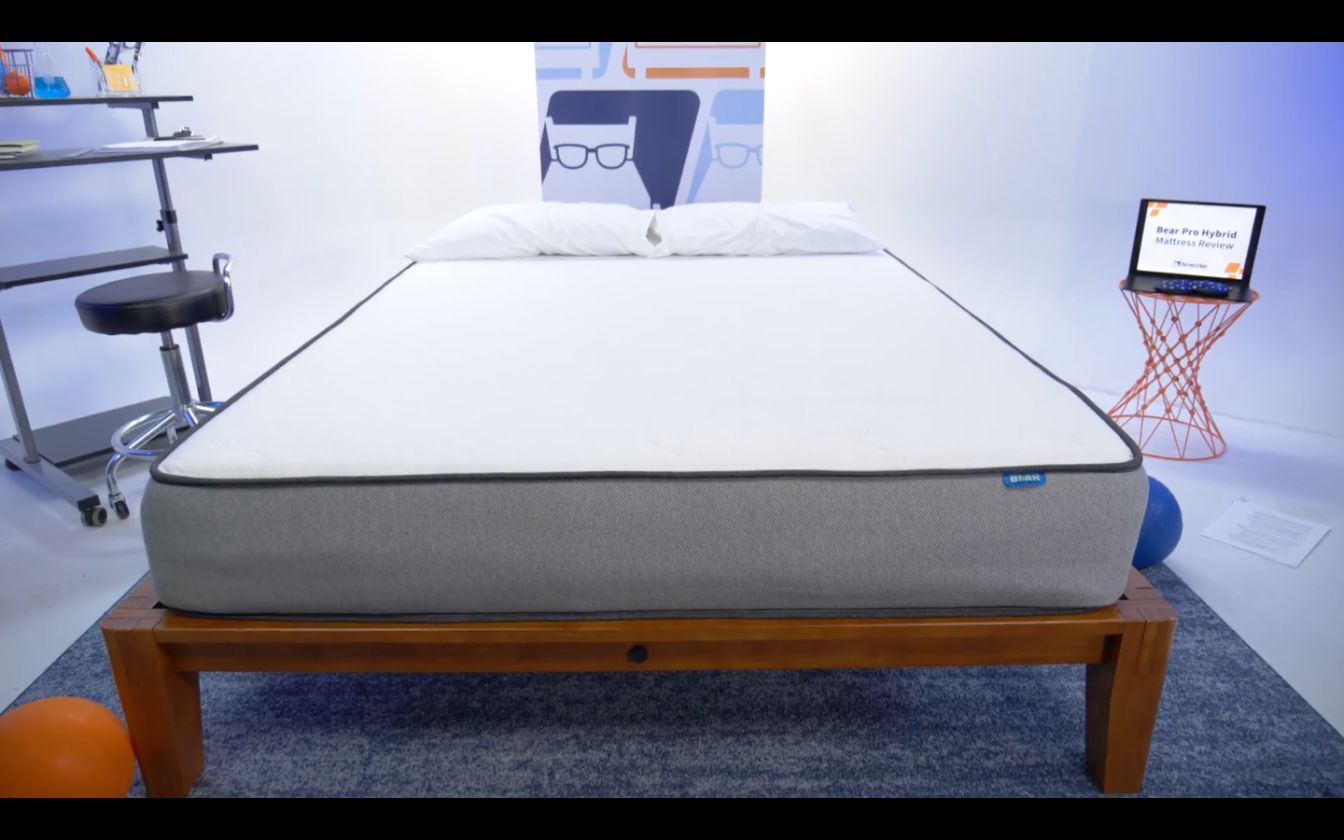

Financing options are available for this mattress.
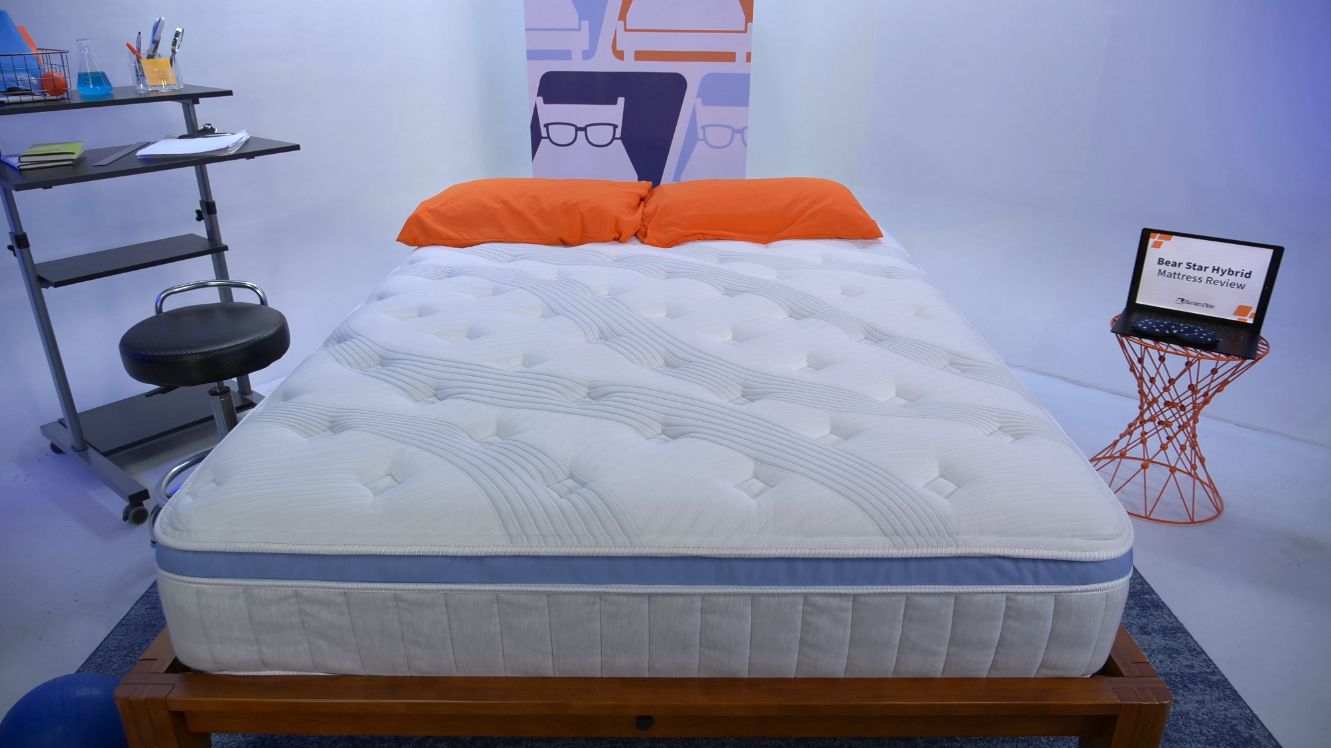

Financing options are available for this mattress.
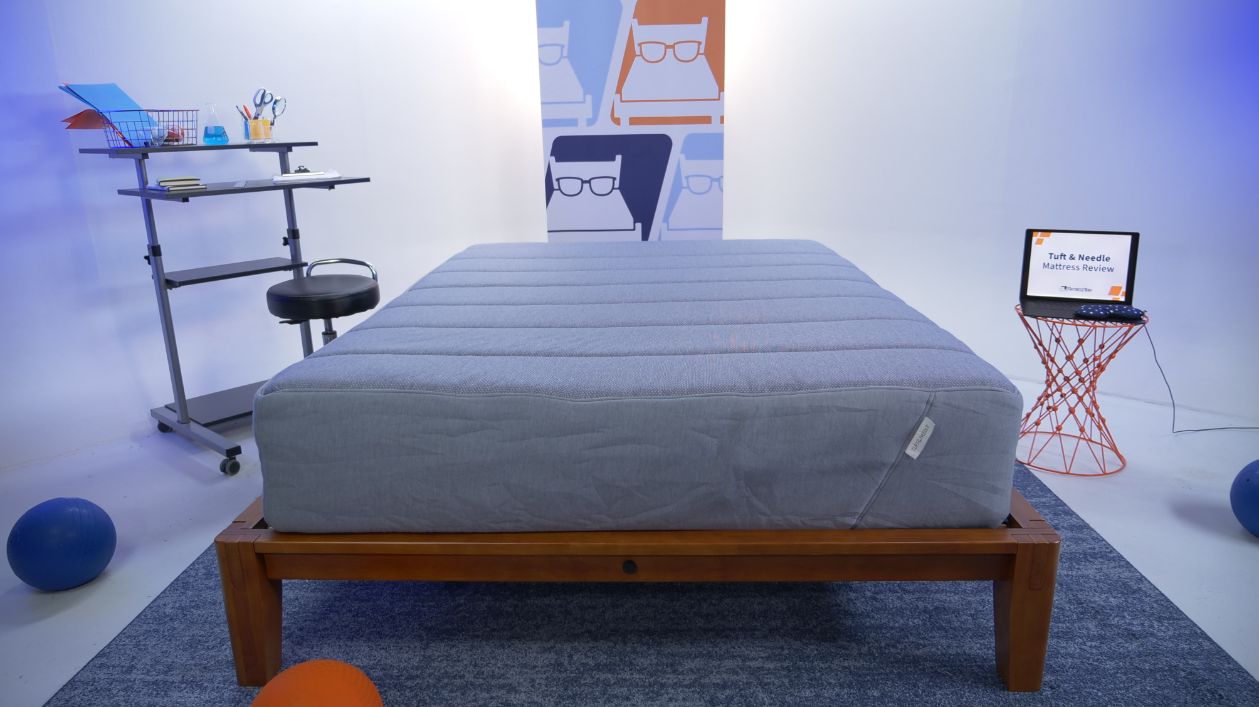

Financing options are available for this mattress.
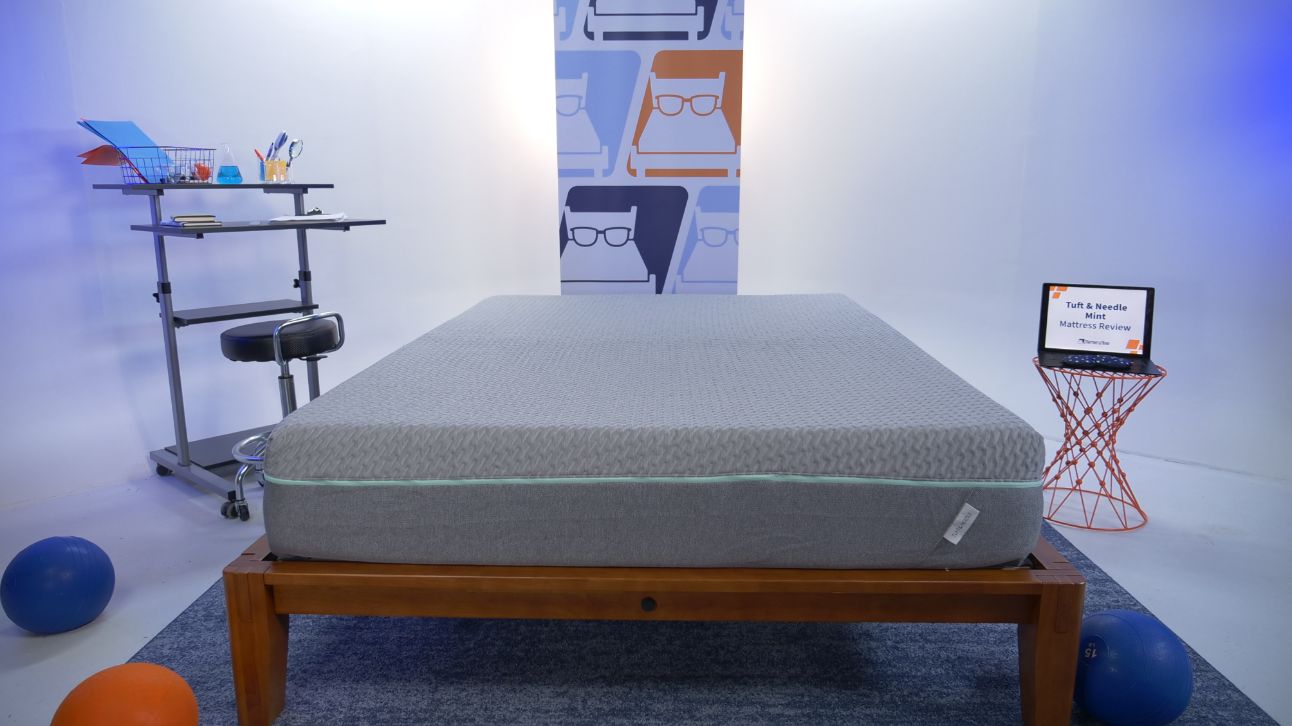

Financing options are available for this mattress.
The Bear Mattress and the Tuft & Needle Original Mattress share many similarities, but certain sleepers will prefer one over the other. The Bear Mattress is ideal for combination sleepers and athletes who tend to sleep hot. The Tuft & Needle Original Mattress is better suited for back and stomach sleepers who want to save a little money on their purchase, but also want a high-quality, cooling sleep experience.
Like other foam mattresses, you can expect your Bear mattress to last you around seven to ten years of use. A mattress’s lifespan is dependent on the daily wear and tear it experiences. So to maximize your mattress, make sure to regularly clean and maintain it.
According to our firmness scale (that goes from 1 to 10, with 1 being the softest to 10 being the firmest), the Tuft & Needle scores a 6.5/10, making it a medium-firm mattress. At this firmness, the Tuft & Needle is able to accommodate most sleeping positions and provides a good combo of comfort and support.
No, there’s no need to flip a Tuft & Needle mattress. Its layers are constructed in a specific way, so sleeping on the other side will drastically affect your sleeping experience. On the other hand, you can rotate the mattress if you want.
Not at all. Despite being an all-foam mattress, the Bear mattress sleeps cool thanks to its moisture-absorbent Celliant cover and graphite gel-infused memory foam.